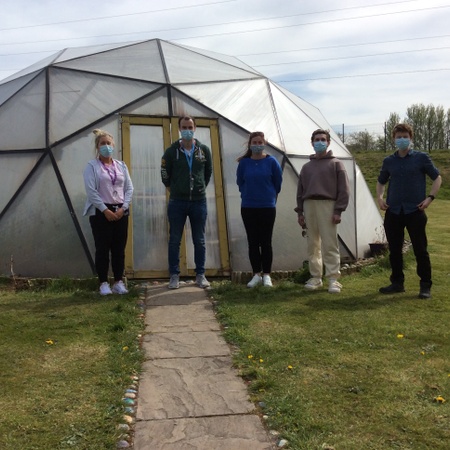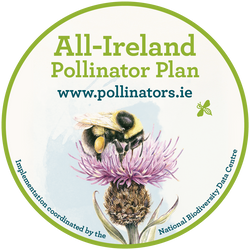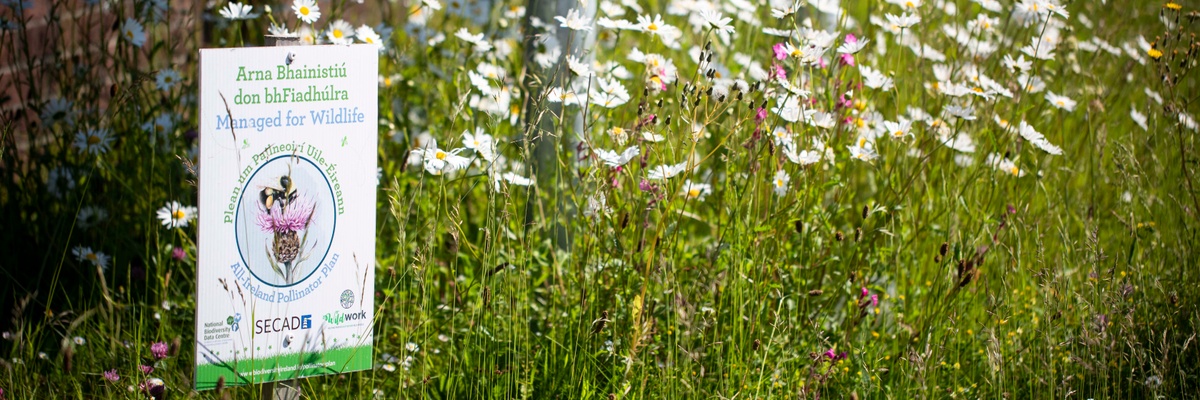

The aim of Pollinator Plan Juniors is to enable students to help our pollinating insects that are struggling to find food and are declining in numbers. The health of our pollinators is crucial to ensure the sustainability of our food, avoid additional economic impacts on agriculture, and protect the health of the environment. Through the Pollinator Plan Juniors, students can learn about our pollinators, why they’re important, and what they need to survive. The programme includes many resources and lesson plans for classes that offer students a constructive way to help the planet and ecosystems, protect biodiversity, and learn about growing and gardening.
The aim of Pollinator Plan Juniors is to enable students to help our pollinating insects that are struggling to find food and are declining in numbers. The health of our pollinators is crucial to ensure the sustainability of our food, avoid additional economic impacts on agriculture, and protect the health of the environment. Through the Pollinator Plan Juniors, students can learn about our pollinators, why they’re important, and what they need to survive. The programme includes many resources and lesson plans for classes that offer students a constructive way to help the planet and ecosystems, protect biodiversity, and learn about growing and gardening.
From the beginning to where we are now, this project has been a hugely positive experience for our school, teachers and students alike!
It has created a lot of awareness about pollinators through discrete lessons that we have taught but also through informal and casual conversation stimulated by the signage outside and the beautiful colour in the new wildflower areas.
The impact of this project is further reaching than just what has been achieved so far. It has created a deeper awareness in many of us of how important bees and other pollinators really are to our environment. It has also pushed us as a team to be more organised and creative when it comes to what we plant and how we manage our outdoor spaces.
Going forward, we have lots of plans that we are looking forward to carrying out. We have to be careful of what we plan due to large building extension works being carried out in the near future. We want to ensure that the work we do will not be jeopardised by construction. One of our plans is to develop our border fence area at the front of our school to be a wildflower patch as well. In addition to this, we plan on planting a spring bulb patch full of flowers like crocus, allium, etc that will provide crucial food for pollinators early in the spring when they are at their hungriest. Going forward into the future, we are looking at managing our grassed areas better and developing more structured mowing plans to allow for the natural development of wildflowers.
We couldn't be happier with the impact of this project and are particularly happy with our ongoing commitment to making our outdoor spaces more pollinator friendly and more child centred at the same time.
Thank you to everyone who has supported us thus far and we look forward to continued growth and development. Check out all of our previous pictures and posts to see our journey so far!
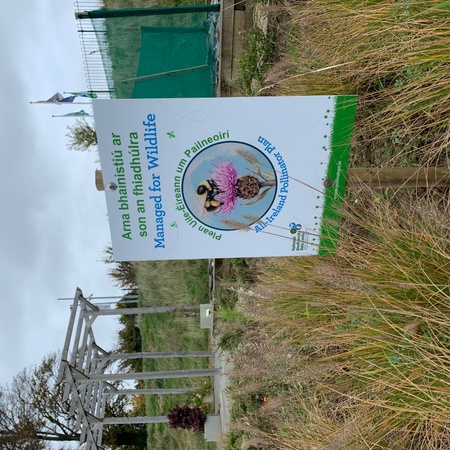
We are delighted to have our signs up and in pride of place in our school grounds! We still have a few signs yet to be placed as we will be deciding in the coming year where we will be continuing to develop wild flower and pollinator patches.
Our school will be extended shortly and we want to ensure that wherever we establish pollinator friendly areas, that they will not be disturbed.
As winter time is fast approaching, we will be leaving patches of long grass and tall seed heads so that insects have places to overwinter.
We look forward to the explosion of colour in the springtime!

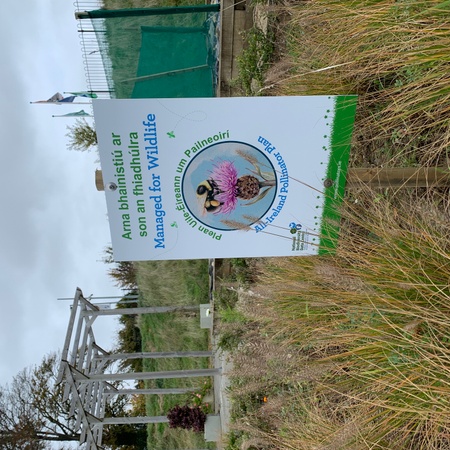
We were delighted to receive these fantastic signs today that are hopefully going to raise awareness and spark conversation around pollinators in our school community.
The children explored our school grounds and we came up with ideas for where to best locate these signs.
Many thanks to Stephen at PrintRoom in Wicklow for his help and guidance in manufacturing these signs.
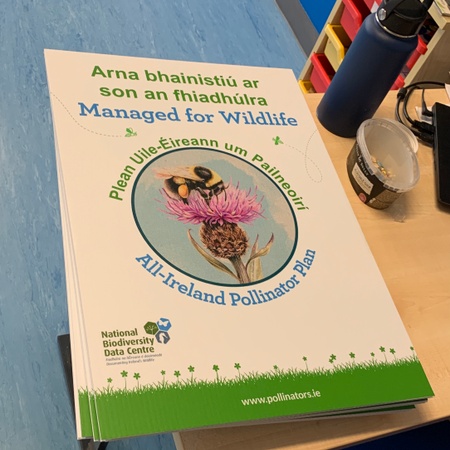
Another year has just begun at PETNS and we were delighted to come back to school to see our wildflower garden in full bloom. Our wilded areas are looking super as well with a visible amount of lots of insects from butterflies to bumblebees!
The next few weeks will see some more changes with signage being erected to mark the various areas. We are marking 10 years as a school this year and we hope to include our Pollinator Plan as a way of celebrating and planning for the future.
Lots of exciting things to come!
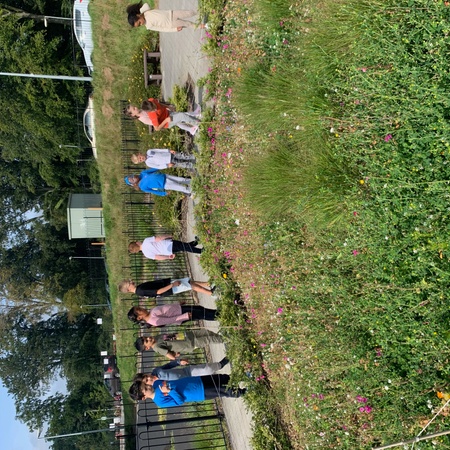
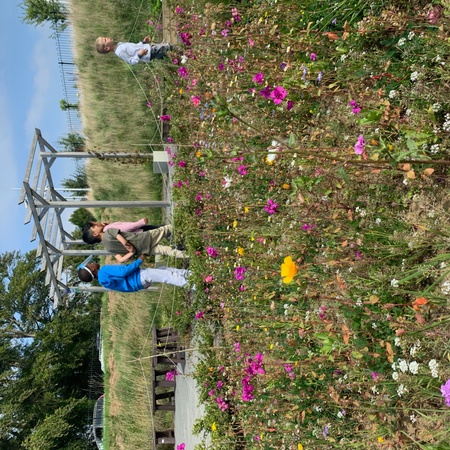
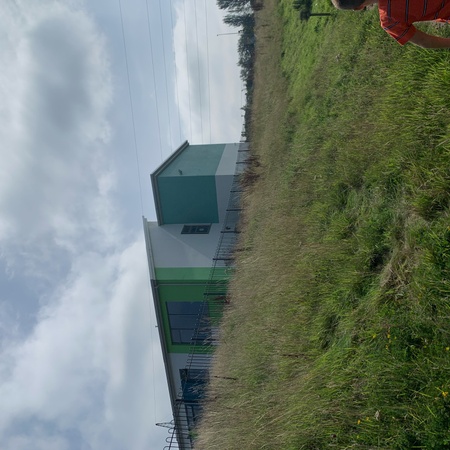
We are delighted to share that we have received our initial funding of €700 for our Pollinator Project!
We cannot wait to put this money to good use on our school grounds and continue our work of making our school and it's surroundings a pollinator friendly environment.
Stay tuned here for more updates on our progress. 😄
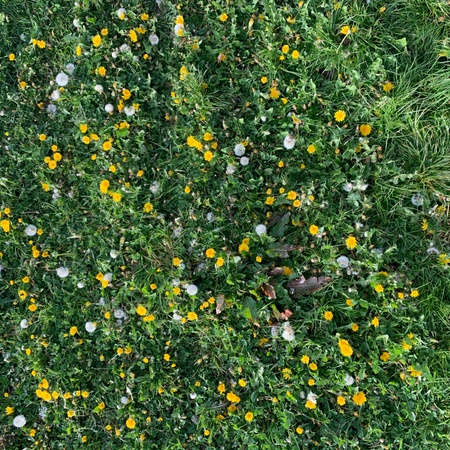
Work is well underway preparing our brand new wildflower patch! Louise enlisted the help of some super students to help compact and rake the soil to give our seeds the best chance of growing into beautiful and healthy flowers!
We are looking forward to continuing our work on making our school grounds the most pollinator friendly we possibly can!
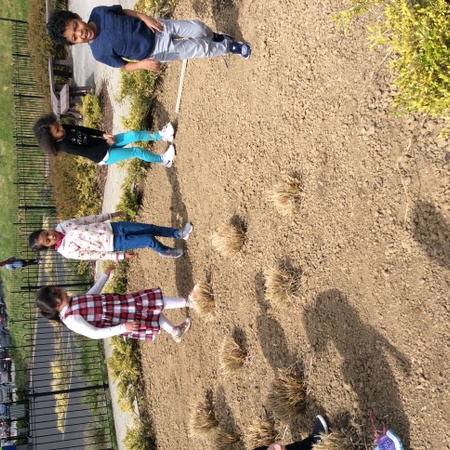
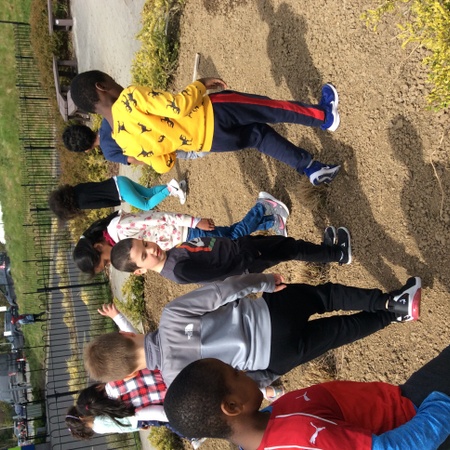
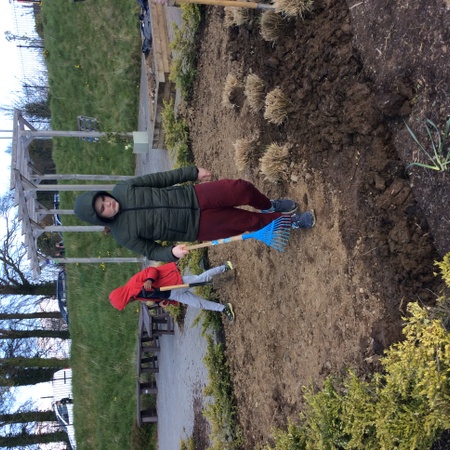
Welcome to our Pollinator Action Plan!
Introduction:
Situated in Dublin 15, our school is on the outskirts of Tyrrelstown where we are fortunate to be surrounded by open fields and old woodland. Being a relatively new development, our school site features young soil with no mature meadow.
We are very fortunate to have a large geodome with raised beds and an additional 4 raised beds in the open air. We have large expanses of lawn with banks leading up to our barrier fence. These banks are not cut regularly and contain long grasses and areas of exposed soil where wildflowers have taken hold.
We currently have a good selection of pollinator friendly plants growing on the site. We have a healthy population of dandelions all over the property and large rosemary beds in the front of school bloom healthily every year. Our lawn also has a healthy amount of clover which we can utilise to allow for pollinator friendly growth.
Because of the upcoming construction of an extension to the west side of the school, it will be vital that any areas we intend on focusing on in the near future will take place in areas that will remain undisturbed during that construction.
Areas of Interest:
Wildflower garden: An area of specially prepared and planted ground where wildflowers will be planted and cultivated. These wildflowers will be specifically chosen for their benefits for pollinators.
Grass banks: The currently existing grass banks serve as an untouched area where there is potential for further wildflower planting and habitat development. Currently this area is not designated for a purpose so official sectioning of these areas needs to occur and appropriate signage needs to be erected to ensure it is maintained as a habitat.
Bumblebee habitat: The aforementioned grassbanks could serve as ideal habitat for bumblebees. Although they are north/west facing, the areas are quiet with little foot traffic and could serve well as bumblebee habitats if properly developed.
Wilding areas: There are some areas of the school property where fresh clay is still exposed and wildflowers have taken hold. Following from this observation, I stipulate that exposing more sections of the property’s soil and allowing it to evolve naturally would have the same effect. These areas would need to be explicitly chosen with signage erected.
Lawn Mowing Plan: Our current lawn has a healthy amount of clover growing through it. Looking at the lawn space, the area around the geodome seems to be the most appropriate for a structured mowing plan. This can be discussed at our next committee meeting.
Seed Funding Plan:
Wildflower seeds
Official signage - quotes have been requested from 3 companies.
Bumblebee habitat supplies - TBD
Tools - adult and children’s.
Covid19 Plan
Due to the current crisis, outdoor areas will be timetabled for use by different classes at different times. Our committee meetings will happen mostly on zoom and outdoors socially distanced if specific elements of the project are being worked on.
Tools that are being used will be sanitized between uses or else left for a minimum period of 48 hours.
